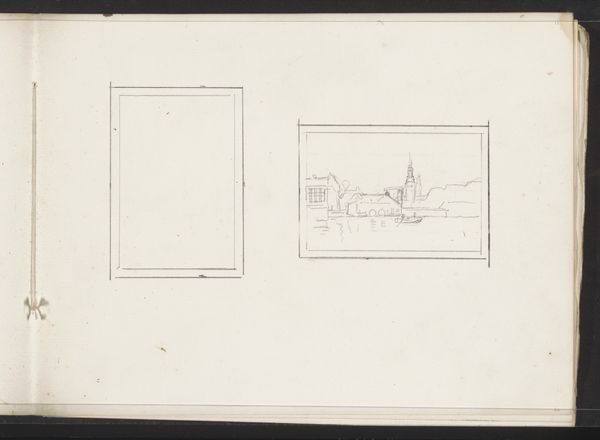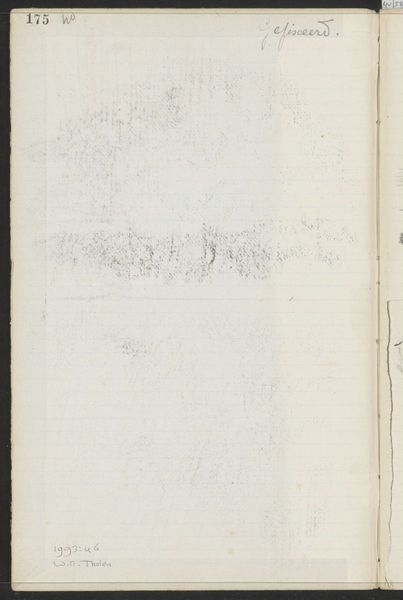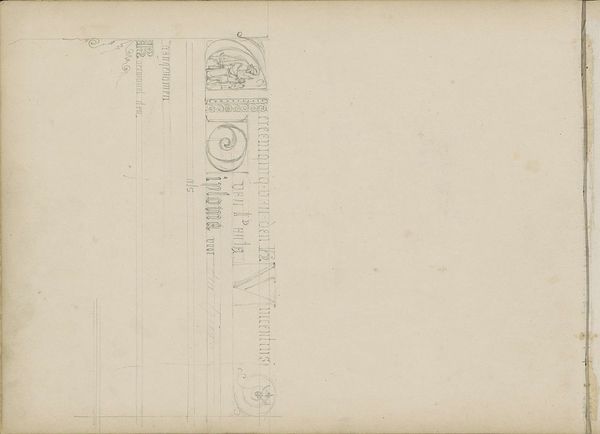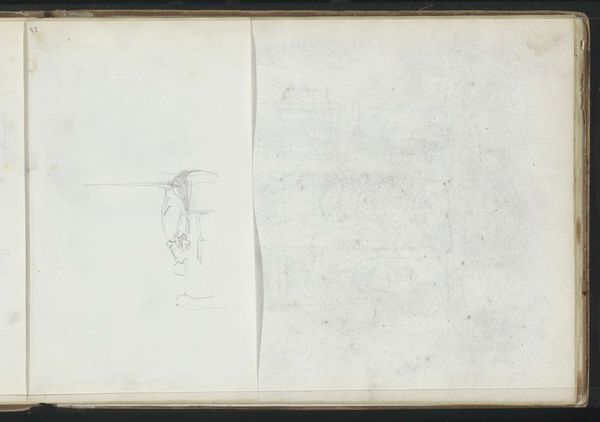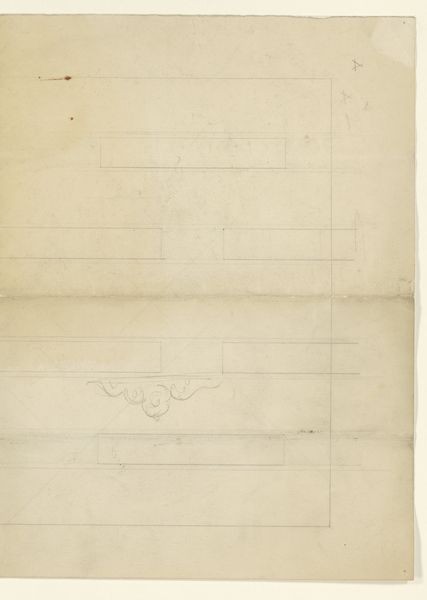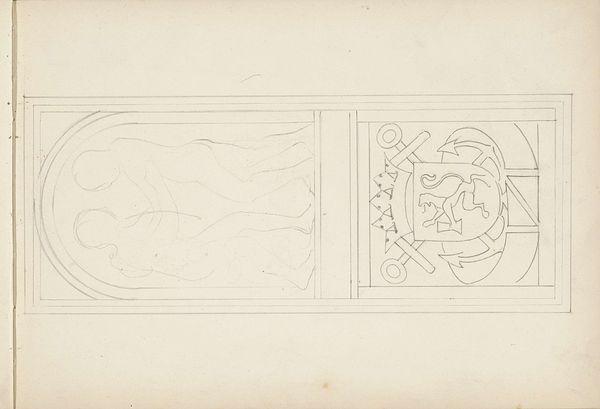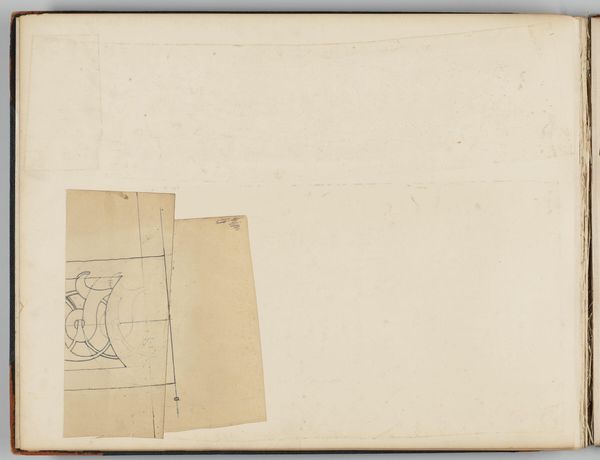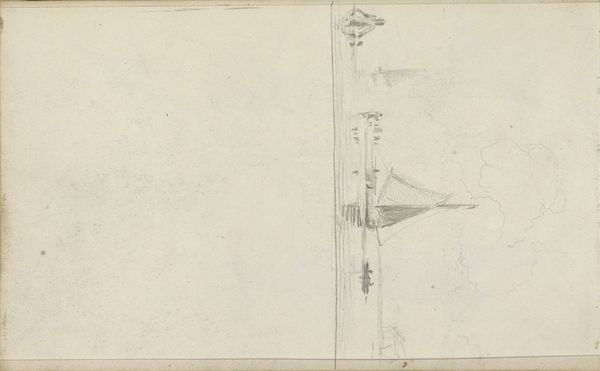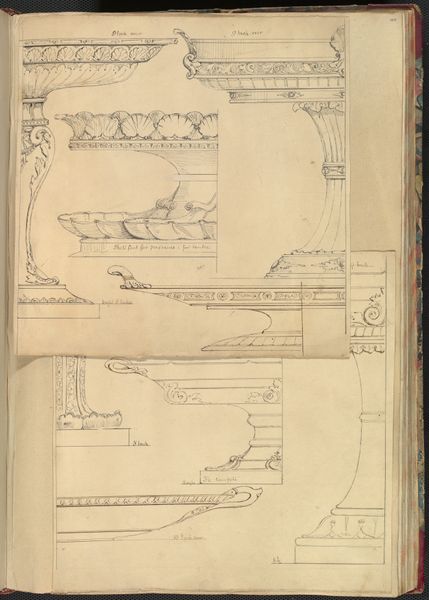
Ontwerpen voor een vignet voor de Vereeniging Elckerlyc te Amsterdam c. 1900 - 1907
0:00
0:00
drawing, graphic-art, paper, pencil
#
drawing
#
graphic-art
#
art-nouveau
#
old engraving style
#
hand drawn type
#
paper
#
personal sketchbook
#
idea generation sketch
#
hand-drawn typeface
#
pen-ink sketch
#
pencil
#
pen work
#
sketchbook drawing
#
sketchbook art
#
initial sketch
Dimensions: height 163 mm, width 101 mm
Copyright: Rijks Museum: Open Domain
Curator: Here we have Gerrit Willem Dijsselhof's "Ontwerpen voor een vignet voor de Vereeniging Elckerlyc te Amsterdam," dating from around 1900 to 1907. It's a preliminary study, executed in pencil, pen and ink on paper. Editor: Immediately, the sketches evoke a sense of secrecy and exclusivity. The fragmented nature and use of esoteric symbolism feels designed to exclude outsiders. Curator: Indeed. Note the precision of line and form. Each element—the triangular structure, the stylized lettering—possesses a self-contained elegance. We should examine Dijsselhof's deliberate employment of Art Nouveau principles within this draft. Editor: Looking at the broader cultural context, it's crucial to remember the burgeoning of associations like Elckerlyc during that period. What societal function did these clubs fulfill, and how did Dijsselhof’s design reinforce their position within Amsterdam’s power structures? Were they truly progressive or, perhaps, just cleverly disguised spaces of exclusion? Curator: I'm drawn to the interplay between the geometric precision and the organic fluidity that define Art Nouveau. See how those botanical suggestions curl around the angular shape! He balances intellect and intuition in this space, creating dynamism with formal tensions. Editor: But who did this dynamism serve? We must remember that while embracing modernity and artistic expression, this was also a period of immense social inequality. I want to ask how the art produced both mirrored and actively reinforced systems of exclusion. What access did ordinary people have to spaces like this, given its stated function? Curator: Considering Dijsselhof’s choice of pen, ink and paper allows him freedom to quickly capture multiple iterations of the design on a single sheet. We witness here the raw energy of creative process. Note how each sketch contributes toward a comprehensive aesthetic statement. Editor: That comprehensive statement surely had implications. Art is never divorced from the historical circumstances in which it was created; exploring its relationship to power, and the society around the artist, deepens its context and resonance. Curator: By carefully assessing Dijsselhof’s technique, we witness both intellectual and intuitive decisions that shaped this beautiful vignette design. Editor: And through these designs we recognize the complex legacy of artistry's power as we work to build new systems of inclusive communities, for all to access.
Comments
No comments
Be the first to comment and join the conversation on the ultimate creative platform.
